Armistead | |
|---|---|
| Coordinates: 32°00′20″N93°22′50″W / 32.0054394°N 93.3804511°W | |
| Country | |
| State | |
| Parish | Red River |
Armistead is an unincorporated community in Red River Parish, Louisiana, United States. [1]
Armistead | |
|---|---|
| Coordinates: 32°00′20″N93°22′50″W / 32.0054394°N 93.3804511°W | |
| Country | |
| State | |
| Parish | Red River |
Armistead is an unincorporated community in Red River Parish, Louisiana, United States. [1]

Armistead Jones Maupin, Jr. is an American writer notable for Tales of the City, a series of novels set in San Francisco.

Armistead Thomson Mason, the son of Stevens Thomson Mason, was a U.S. Senator from Virginia from 1816 to 1817. Mason was also the second-youngest person to ever serve in the US Senate, at the age of 28 and 5 months, even though the age requirement for the US Senate in the constitution is 30 years old.

Lewis Addison Armistead was a career United States Army officer who became a brigadier general in the Confederate States Army during the American Civil War. On July 3, 1863, as part of Pickett's Charge during the Battle of Gettysburg, Armistead led his brigade to the farthest point reached by Confederate forces during the charge, a point now referred to as the high-water mark of the Confederacy. However, he and his men were overwhelmed, and he was wounded and captured by Union troops. He died in a field hospital two days later.
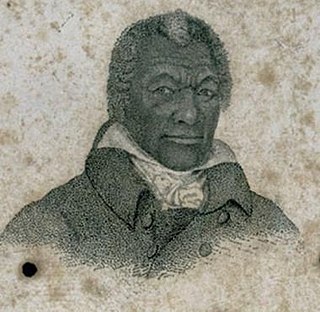
James Armistead Lafayette was an American slave who served the Continental Army during the American Revolutionary War under the Marquis de Lafayette, and later received a legislative emancipation. As a double agent, he reported the activities of Benedict Arnold after he had defected to the British, and of Lord Charles Cornwallis during the run-up to the siege of Yorktown. He fed the British false information while disclosing very accurate and detailed accounts to the Americans.
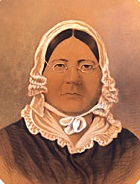
Mary Pickersgill was the maker, along with thirteen-year-old Grace Wisher, her African American enslaved servant, of the Star-Spangled Banner hoisted over Fort McHenry during the Battle of Baltimore in the War of 1812. The daughter of another noted flag maker, Rebecca Young, Pickersgill learned her craft from her mother, and, in 1813, was commissioned by Major George Armistead to make a flag for Baltimore's Fort McHenry that was so large that the British would have no difficulty seeing it from a great distance. The flag was installed in August 1813, and, a year later, during the Battle of Baltimore, Francis Scott Key could see the flag while negotiating a prisoner exchange aboard a British vessel, and was inspired to pen the words that became the United States National Anthem in 1931.

Armistead Gardens is a neighborhood in the Northeast District of Baltimore. It is located north of Pulaski Highway and east of Erdman Avenue, between Herring Run Park (northeast) and the East District neighborhood of Orangeville (southwest).
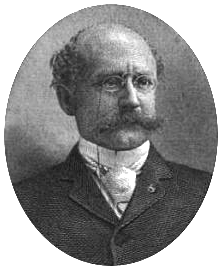
Henry Harrison Bingham was an American politician from Pennsylvania who served as a Republican member of the U.S. House of Representatives for Pennsylvania's 1st congressional district from 1879 to 1912. He was a Union Army officer in the American Civil War, fought in some of the key battles of the war and received the United States Military's highest award for valor, the Medal of Honor, for his actions at the Battle of the Wilderness.

Louisiana, or the Province of Louisiana, was a province of New Spain from 1762 to 1801 primarily located in the center of North America encompassing the western basin of the Mississippi River plus New Orleans. The area had originally been claimed and controlled by France, which had named it La Louisiane in honor of King Louis XIV in 1682. Spain secretly acquired the territory from France near the end of the Seven Years' War by the terms of the Treaty of Fontainebleau (1762). The actual transfer of authority was a slow process, and after Spain finally attempted to fully replace French authorities in New Orleans in 1767, French residents staged an uprising which the new Spanish colonial governor did not suppress until 1769. Spain also took possession of the trading post of St. Louis and all of Upper Louisiana in the late 1760s, though there was little Spanish presence in the wide expanses of what they called the "Illinois Country".
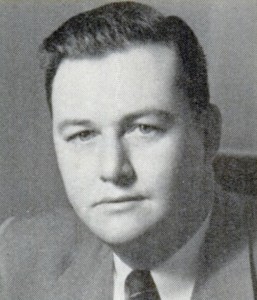
Armistead Inge Selden Jr. was a segregationist U.S. Representative from Alabama.

Armistead Burt was a U.S. Representative from South Carolina.

Delacroix is an Isleño fishing community and census-designated place (CDP) located in St. Bernard Parish, Louisiana. It was first listed as a CDP in the 2020 census with a population of 48. The community is also popularly known as Delacroix Island. The community was established in 1783 with the settlement of Canary Islanders along Bayou Terre-aux-Boeufs.

Irván J. "Puco" Pérez was an Isleño folk artist and advocate for the Isleño identity. He is most well known for the singing of décimas, but he was also an accomplished woodcarver. Throughout his life, he assisted academics in the study of the Isleño Spanish language, culture, and customs.
Rex Armistead was a private detective, Mississippi Highway Patrol officer, and the leading operative for the since disbanded Mississippi State Sovereignty Commission. Later, he was heavily involved as an investigator for the Arkansas Project, a co-ordinated attempt in the 1990s to investigate then U.S. President Bill Clinton. The project was funded by conservative media billionaire Richard Mellon Scaife.
Samuel Gordon Armistead was an American ethnographer, linguist, folklorist, historian, literary critic and professor of Spanish. He is considered one of the most notable Hispanist scholars of the second half of the 20th and early 21st century.

Reggio, also known as Bencheque, is an Isleño fishing community located in St. Bernard Parish, Louisiana. The community was established in 1783 with the settlement of Canary Islanders along Bayou Terre-aux-Boeufs. During the last decade of the eighteenth century, Louis de Reggio purchased land from the Isleños to establish a sugarcane plantation. It is perhaps the only community in the United States that bears a Guanche-language name.

The 1968 United States Senate election in Alabama took place on November 5, 1968. Incumbent Democratic U.S. Senator J. Lister Hill retired. He was succeeded by Lieutenant Governor of Alabama James Allen, who won a hotly contested primary over Armistead I. Selden Jr. In the general election, Allen easily defeated Republican Probate Judge Perry O. Hooper Sr. and National Democratic nominee Robert Schwenn.
Canarian Americans are Americans whose ancestors came from the Canary Islands, Spain. They can trace their ancestry to settlers and immigrants who have emigrated since the 16th century to the present-day United States. Most of them are descendants of settlers who immigrated to Spanish colonies in the South of the modern US during the 18th century. The Canarians were among the first settlers of the modern United States; the first Canarians migrated to modern Florida in 1569, and were followed by others coming to La Florida, Texas and Louisiana.
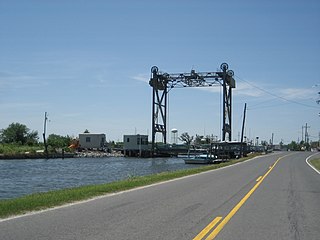
Yscloskey, also commonly known as Habitación[aβitaˈsjon] in Spanish, is an Isleño fishing community in St. Bernard Parish, Louisiana, United States. The community is located near the coast of Lake Borgne on the northeastern bank of Bayou la Loutre and along both sides of Bayou Yscloskey. Following the American Civil War, the community was founded by Isleño hunters, trappers, and fisherman.
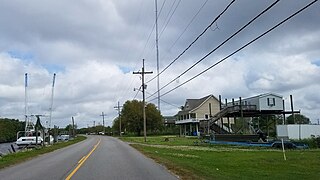
Wood Lake is an Isleño fishing community in St. Bernard Parish, Louisiana, United States. The community is situated along Bayou Terre-aux-Boeufs to the northeast of Delacroix, Louisiana and west of Lake Lery. Following the American Civil War, the community was founded by Isleño hunters, trappers, and fisherman.